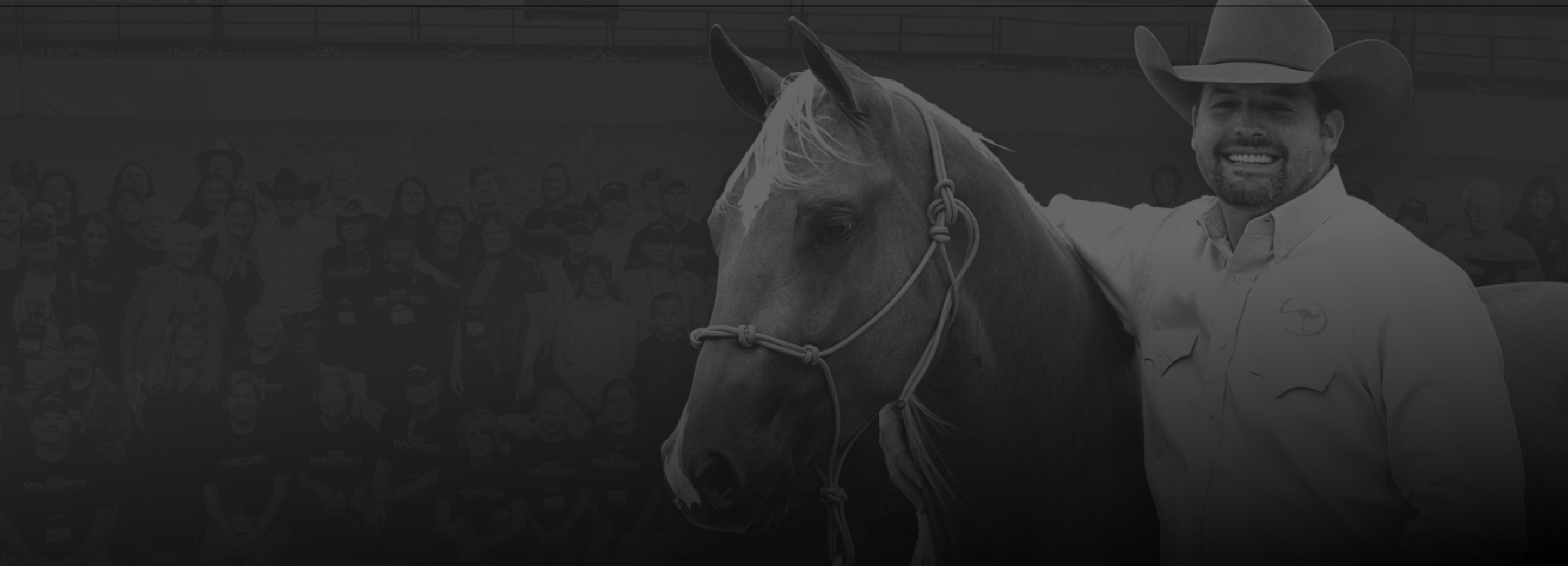For the past 20 years, Clinton Anderson from Downunder Horsemanship has devoted his life to creating the best training tools and videos available to help bring his method to you. Join him on his weekly endeavors of tackling some of the most challenging situations with problem horses, and problem owners. This week, Clinton explains how to select a trail horse.
Clinton begins by telling us that picking the right horse is one of the most important factors in whether or not you’ll have success or failure throughout your journey as a horseman. It’s really quite simple. All horses in the world pretty much fall into two categories. The only exception to this rule is with Mustangs and wild brumbies in Australia, which is basically the Australian version of a wild Mustang. That means that (almost) all horses are bred to do something. They can either fall into a hot category or a cold category.
Hot-blooded horses are horses like Thoroughbreds, Arabians, some bloodlines of Quarter horses, and Pasos. These horses are very athletic, very sensitive, and very intelligent. They’re quick minded, ambitious, and intuitive type horses. Hot-blooded horses notice every little change—if a blade of grass is moved two inches, they’ll notice it.
Cold-blooded horses are more of your lazy kind of horse. These include breeds like Fjords, Belgian Draft horses, most breeds of gaited horses, Foundation Quarter horse bloodlines. Friesians, and other bigger horses. These horses tend to be very quiet and docile. They’re usually good-minded, easy going, not easily spooked, clam, level-headed, and aren’t bothered by most things. Cold-blooded horses don’t tend to overreact very easy and would rather go slow than fast.
Clinton explains that there are pros and cons to each type of horse. For example, even though hot-blood horses are very athletic and smart, they’re also very easily spooked and reactive. They can use their smartness against you in a lot of ways, so you need to be an experienced horseman to be able to deal with all of that. Hot-blooded horses are like the Ferrari of the car world—they have a big engine, and you need to know how to channel that energy to stay safe. On the other hand, cold-blooded horses, although quiet, gentle, and forgiving, are kind of lazy. They don’t really have any ambition to get better and are happy with taking home the minimum wage. Cold-blooded horses tend to want to be left alone and go slow through life, making it hard if you’re looking for a strong trail horse. However, they’re still the recommended option for horseman who are first starting their journey.
Clinton tells us that neither hot-blooded horses nor cold-blooded horses are bad, but the overall goal of his method is to train all horses to achieve a lukewarm, middle ground. A lukewarm horse has the best qualities of both and will do whatever a horseman tells him to do. This is easier to achieve with a hot-blooded horse. Cold-blooded horses are very difficult to motivate. You can’t really get them to put in the effort you need, but over time and with the right training you can make slow progress. It’s just important to remember that they’re very content with their D average. Getting a cold-blooded horse to be ambitious is going to drive you crazy as they’re pretty lazy. On the other hand, getting a hot-blooded horse to calm down can be downright dangerous. The trick is finding a horse that will work with you in a middle ground. Again, if you’re a beginner horseman, it’s best to choose a cold-blooded horse and gain your footing. If you’re more experienced and have mastered some techniques in the Downunder training method, working with a hot-blooded horse can be extremely rewarding. However, finding a lukewarm horse that will go and be athletic when you want him to be and chill or calm when you say is the ideal trail horse. The Clinton Anderson method will help you train your horse to be lukewarm and adaptable.
To learn more about the Clinton Anderson training method, become a member of the No Worries Club, or to get information on any of the products seen on our show, head over to our homepage and download the Downunder Horsemanship app today! If you’re interested in getting accelerated results, let a Clinton Anderson Certified Clinician bring the method to you!

Want To Learn More? SIGN UP FOR OUR LOYALTY PROGRAM
Master your horsemanship training through Clinton’s step-by-step method videos by joining the No Worries Club today. Becoming a club member ensures you get VIP pricing on all of Clinton’s must-have training tools and resources. Plus, you’ll enjoy all the phenomenal benefits that come with club membership!



